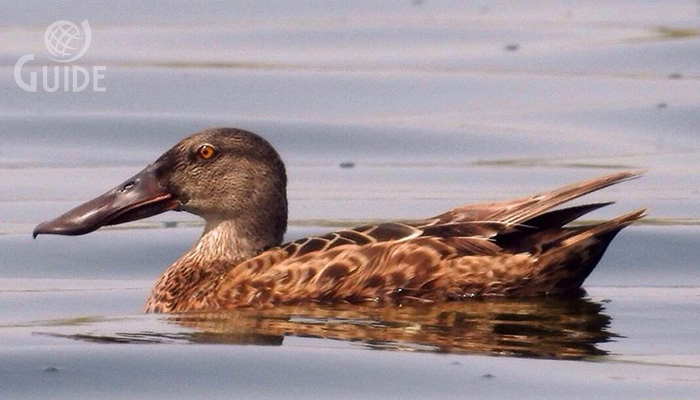
English: Northern Shoveler, Common Shoveler, European Shoveler
Russian: Широконоска
German: Loffelente
French: Canard
souchet
Mongolian: Халбага нугас
Japanese: ハシビロガモ (Hashibiro-gamo)
Body
length: 51-62 cm
Wing
span: 79-87 cm
Passage migrant/ summer visitor
Breeding season: May-September
Egg number: 8-12
Egg colour: Creamy-buff or olive tinted
Brood: 1 per year
Global status: Least concern
Regional status: Least Concern
Habitat: Breeds on shallow eutrophic lakes with rich vegetation,
or marshes with sufficient open water. Largely migratory. Although fairly common and
widespread, usually seen in pairs or smaller parties only.
Identification:
Medium large duck with short neck but strikingly long and broad bill, giving
front-heavy look both when swimming and in flight. Wing rather evenly broad,
but appearing slightly narrower than on Mallard.
- Adult
♂ breeding: Unmistakable; head green (appearing black at distance), breast
white, belly and flanks vividly chestnut. Upper forewing pale blue, speculum
green, bordered white at front.
- Adult
♀: Resembles Mallard except for huge bill, and belly dark brown, contrasting
with white underwings; speculum dull green-grey without white trailing edge
(white bar at front only, being narrower towards body), and upper forewing dull
pale grey.
- Adult
♂ eclipse: As adult ♀, but especially flanks and belly more rufous-tinged, head
darker, and pale blue upper forewing retained.
- Juvenile:
As adult ♀,
but crown and hindneck darker, and belly slightly paler.
Food:
Grazes in wet meadows with short vegetation and insects.